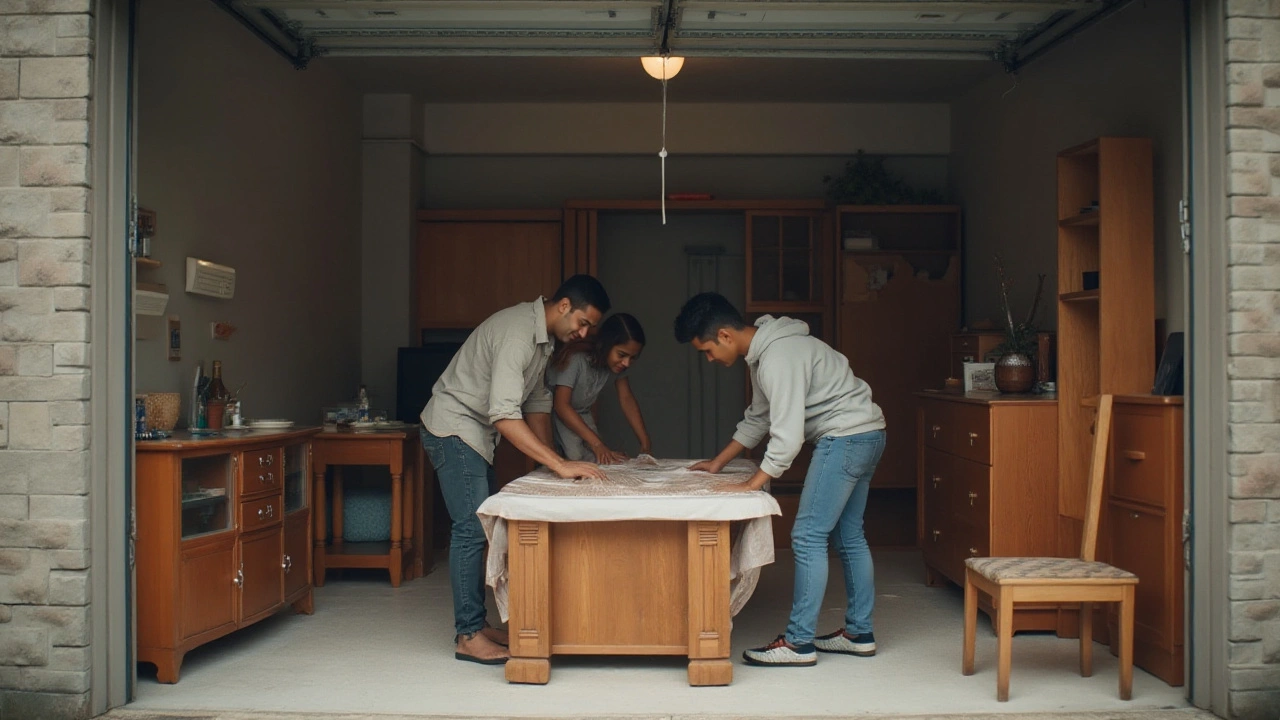Storing Furniture Made Simple: What You Need to Know
Got a couch, a coffee table, or a whole bedroom set that needs to sit out of sight for a while? Most people worry about dents, scratches, mold, or simply not fitting everything into a cramped storage unit. The good news? You don’t need a PhD in logistics to keep your pieces safe. Below you’ll find straight‑forward advice you can apply today, whether you’re shuffling furniture between apartments or tucking a seasonal sofa into a 10×10 unit.
Common Risks When Storing Furniture
Before you start loading, it helps to know what can go wrong. Here are the usual culprits:
1. Pressure points and sagging. Heavy items stacked on a soft sofa can crush the cushions or warp the frame.
2. Moisture and mold. Damp basements or units with poor ventilation create a perfect breeding ground for mold, which can smell bad and damage upholstery.
3. Scratches and dents. Moving a glass‑top coffee table without a protective pad can leave permanent marks, and metal legs can bend if they bump into corners.
4. Size miscalculations. A couch that looks fine in a living room might not fit through a narrow hallway or a 10×10 storage space. Over‑estimating clearances leads to costly last‑minute fixes.
Knowing these pitfalls lets you plan ahead, saving time, money, and headaches.
Pro Tips to Store Safely and Save Space
Measure twice, store once. Grab a tape measure and note the length, width, and height of each piece. Compare those numbers to the doorways, elevators, and storage unit dimensions. If a sofa is 84 inches long, a 10×10 unit (120 inches by 120 inches) leaves you about 36 inches of breathing room—enough for a few boxes, but not a full bedroom set.
Disassemble what you can. Take off legs, arms, and cushions. Store screws in a zip‑lock bag taped to the furniture. This reduces bulk and keeps delicate parts from getting knocked around.
Wrap everything in breathable material. Use moving blankets or cotton sheets instead of plastic wrap. Plastic traps moisture, which invites mold; breathable fabrics let air circulate while protecting against scratches.
Elevate off the floor. Place pallets or clean plywood sheets under each item. Raising furniture a few inches prevents water from seeping up from the ground and makes it easier to sweep away dust.
Control humidity. If your storage unit has a climate‑control option, choose it. Otherwise, drop a few silica gel packets or a dehumidifier pack in the corners. Aim for humidity below 60% to keep mildew at bay.
Use furniture covers wisely. A fitted couch cover can shield against dust, but make sure the cover isn’t airtight. A loose sheet works just as well and lets air move.
Label boxes and pieces. Write the item name and destination room on each box. When you finally retrieve everything, you’ll know exactly where the armrest belongs.
By following these steps you’ll avoid the common woes that turn a short‑term storage job into a long‑term regret.
Next time you face a moving day or need to stash a seasonal set, remember: a little planning and the right protective gear go a long way. Your furniture will thank you when it’s time to bring it back into the living room – looking as fresh as the day you bought it.
Should I Cover My Couch in Storage?
Wondering if you should cover your couch when storing it? This article explores the benefits and methods of covering couches to protect them from dust, moisture, and pests. Learn how proper covering can extend the life of your sofa, and get practical tips on the best materials to use. The right approach can keep your couch looking fresh and damage-free for when you're ready to use it again.
Storing Furniture in a Cold Garage: Essential Tips and Tricks
Storing furniture in a cold garage can be quite challenging if not done properly. Fluctuations in temperature and moisture can significantly impact the integrity of furniture materials. Whether you're dealing with wood, metal, or fabric, understanding how these elements react to the cold is crucial. With the right precautions, you can protect your belongings and make the most of your garage space.






